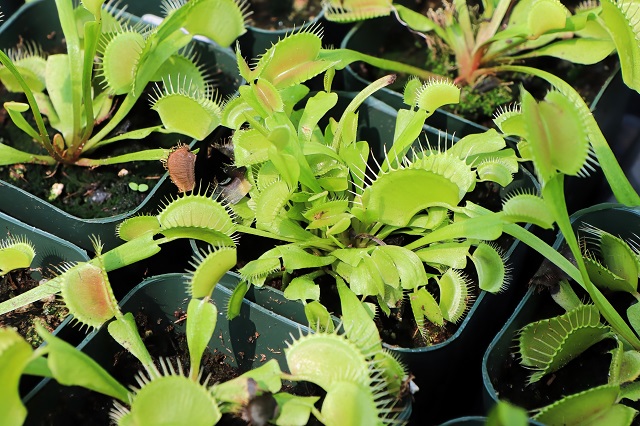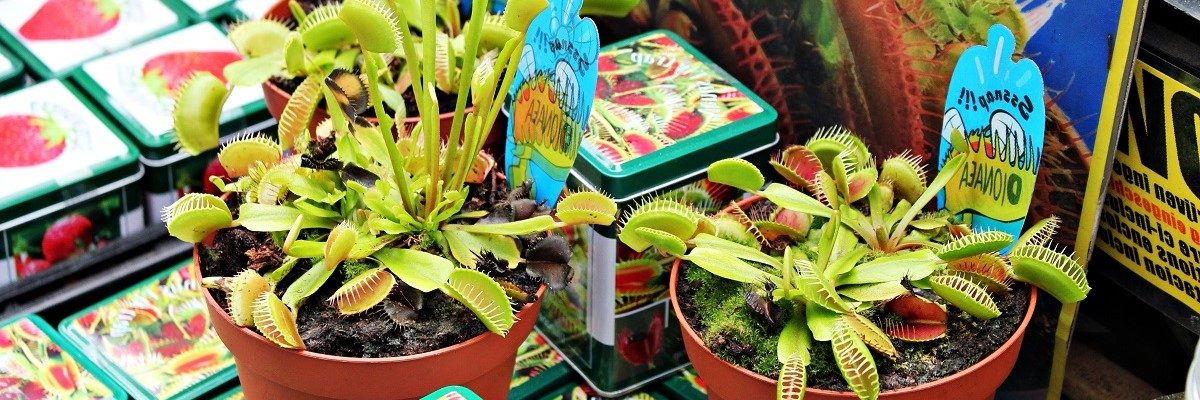Venus flytraps can be bought relatively cheaply, with the cost of the plant varying depending on the size. Typically, a venus flytrap will cost between $2 and $10. Shipping adds around an extra $5, making them a popular choice for those looking to add a touch of nature to their home or garden. As venus flytraps are a type of carnivorous plant, they require very little maintenance, making them a low-maintenance option for those who are new to gardening.
Where can I buy a Venus flytrap?
Venus flytraps can be purchased from garden stores or online. They are typically sold as potted plants, and prices vary depending on the size of the plant. Venus flytraps can also be propagated from cuttings, so you may be able to get a plant for free if you know someone who has one. Make sure to ask before taking a cutting, as some people may consider Venus flytraps to be endangered species.
When should I buy a Venus flytrap?
Venus flytraps are interesting plants that can be a fun addition to any garden. They’re also carnivorous, meaning they eat protein, so you’ll need to provide them with some live insects to snack on. If you’re thinking about buying a Venus flytrap, you should keep a few things in mind.
The first thing to consider is the climate. Venus flytraps need warm weather to thrive, so they won’t do well in cold climates. If you live in an area that doesn’t have warm summers, you may want to consider growing your Venus flytrap indoors. The best time to buy your Venus Flytrap is in the spring after their dormancy period when they’re starting to grow new leaves. You can find Venus flytraps at most garden centers or online.
Make sure you research before buying one, as not all Venus flytraps are created equal. Some plants may be harder to care for than others, so it’s important to pick the right one for your needs.
How often does a Venus flytrap need watering?
Venus flytraps require watering every two to four days, depending on the season. In the winter, they need less water because they are dormant. The plant will grow more slowly in the winter, so it’s important not to overwater. In the summer, Venus flytraps need more water because they are growing more quickly. Overwatering can cause the plant to rot. Venus flytraps like moist soil but don’t like to sit in water. It’s important to make sure the soil is well-drained. If the pot has a drainage hole, you can place it in a dish that collects excess water. You can also lightly water the plant from above every two to four days.

Exactly how much sunlight does a venus flytrap require?
In order to thrive, venus flytraps need plenty of sunlight. They need at least six hours of direct sunlight daily, and more is always better. If you live in a location with less than ideal sunlight conditions, you can try growing your venus flytrap in a sunny window or using a grow light.
When using a growing light, be sure to position it so that the venus flytrap receives direct light from it for at least six hours per day. Venus flytraps can also be grown outdoors in climates with plenty of sunlight. In the wild, venus flytraps grow in sunny, boggy areas near ponds and streams. If you live in an area with a temperate climate, you may be able to grow your venus flytrap outdoors year-round. However, if you live in a hot or cold climate, it’s best to bring your venus flytrap indoors during the winter or summer months.
Do Venus flytraps need to be enclosed?
Venus flytraps grow happiest in open pots, so do not cover them with a lid. Doing so can actually lead to the plant’s death. Flytraps rely on insects for food, and by covering the pot, you are preventing them from getting the nutrition they need. A healthy Venus flytrap will have long, red, spindly traps with many small teeth along the edges. If your Venus flytrap is not trapping insects, then it’s likely not getting enough light or nutrients. Try moving it to a brighter location and feeding it fresh insects every few days. With proper care, your Venus flytrap will thrive!
How do I keep my Venus flytrap from dying in the winter?
Venus Flytraps need a winter dormancy to stay healthy and alive, so keeping them in a cool place where they will not be disturbed is important. Those of you who must keep their Venus Flytraps indoors during the winter should move their plants to the coldest room in the house to slow the growth rate as much as possible. You can also place your Venus Flytrap in a refrigerator, but do not freeze it! Make sure the Venus Flytrap has plenty of water, but avoid over-watering it. Remember, Venus Flytraps need very little water to live – too much water will rot the plant. In the spring, when you move your Venus Flytrap back to a warmer room, gradually increase the temperature over several days to acclimate it to the new environment slowly.
The Venus Flytraps Habitat
The Venus flytrap is a carnivorous plant that is found in the wetlands of North and South Carolina. The Venus flytrap’s habitat is in wet, acidic soil that is poor in nutrients. The plant grows to about 7 inches tall and has leaves that are in two parts. The trap of the Venus flytrap is a special part of the leaf that can snap shut when it detects prey. The Venus flytrap eats insects, spiders, and other small creatures.
The Venus flytrap grows slowly but can live for many years. It is a protected plant in North Carolina, where it is illegal to pick or damage them. Venus flytraps are popular as houseplants and can be purchased from garden stores. They should be kept in moist soil and bright light to thrive.

